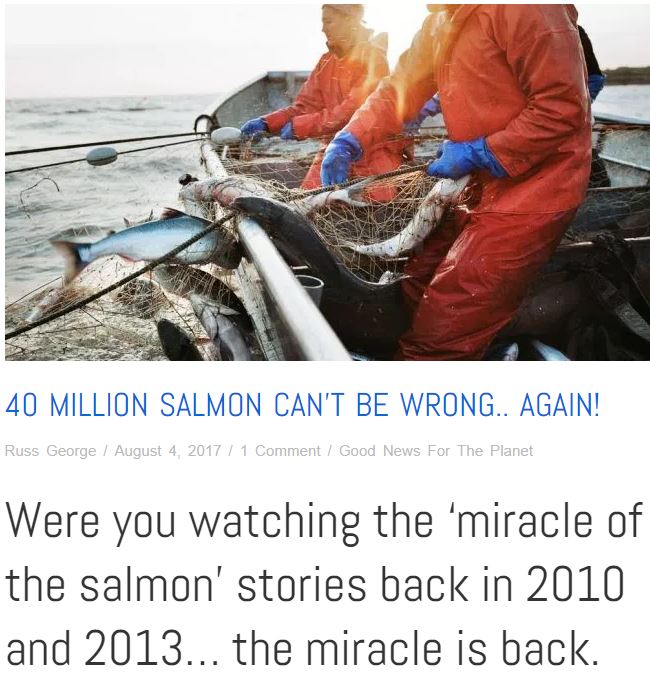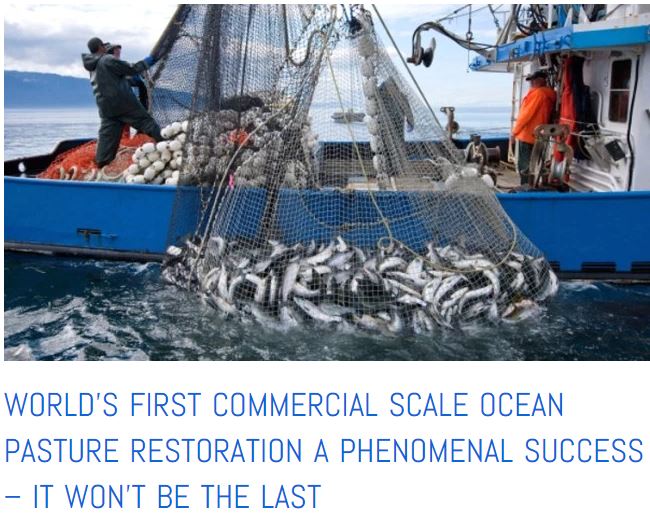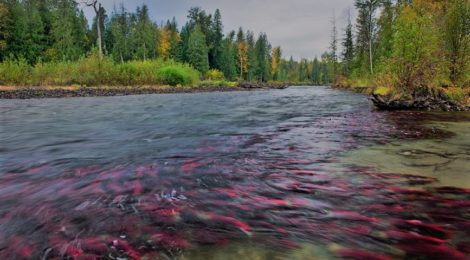
Canada’s Salmon Enhancement And Conservation Plan Declared An Epic Fail
Decades of Salmon Enhancement Work Costing Billions Has Resulted In Salmon At The Lowest Numbers In History
Canada has had one of the world’s most robust wild-salmon conservation policies or so it has been claimed
It has been an Epic Fail as leading salmon scientists inside and outside government have declared.
Worst of all proven transformational methods to restore the ocean fish pastures that has delivered historic returns of fish have suffered criminal attacks by government swat assaults as well as condemnation by establishment salmon management and science for its “not invented here’ nature.
The Wild Salmon Policy was hailed as “transformative and timely” when it was introduced in 2006, said lead author Michael Price, a biologist at Simon Fraser University.
But now after 12 years in, Fisheries and Oceans Canada (DFO) remains unable to determine the health or threat status of at least half of the province’s salmon populations, according to the study published in the Canadian Journal of Fisheries and Aquatics. The study just published in the Canadian Journal of Fisheries and Aquatic Sciences, reveals that the DFO has cut back so dramatically on in stream studies that it no longer has enough data to determine the status of 50 per cent of all managed salmon populations along B.C.’s north and central coasts.
The studies abstract reads: “Canada’s Policy for Conservation of Wild Pacific Salmon has been heralded as a transformative approach to the management of wild salmon whereby conservation is the highest priority. Given that changes to the Policy are under consideration, it is timely that we understand whether our state of knowledge and the status of wild salmon in Canada have indeed improved after its adoption in 2005.
Our results, based on data for all species from British Columbia’s north and central coasts, show that monitoring effort has continued to erode, abundance of spawning adults has significantly declined for several species, the status of many salmon Conservation Units are in zones of concern, and 42% of the Conservation Units that we assessed as Red (threatened) would have improved in status had the Canadian catch been reduced.”
Management on behalf of the fishing industry NOT the fish.
If government continues to promote fishing that captures individuals from fragile salmon runs, many genetically and geographically distinct populations could be driven into extinction. The authors of the study note that effect of the lack of data being gathered about the state of salmon results in the failure of necessary warning bells being sounded.
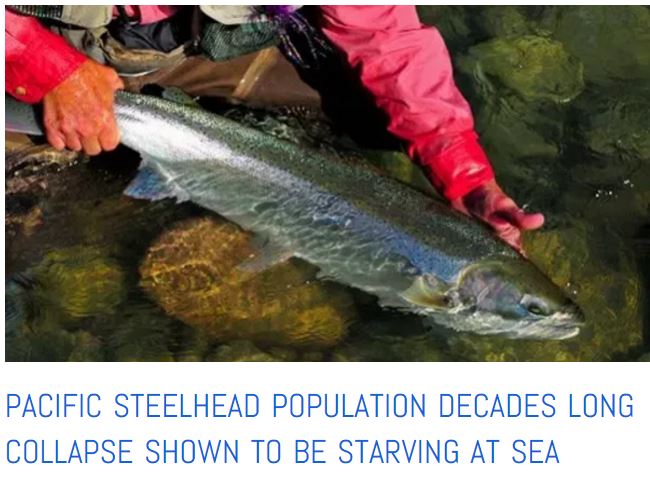
Years ago while employed by the BC government one of most favourite of all jobs was swimming BC’s rivers as one of the team members sent out to count the fish. From daylight to dusk we’d swim down the rivers in our wet suits noting what we saw on our trusty ‘ducksback’ waterproof notebooks. – click to read more
Annual data-collection trips to spawning streams recorded in DFO’s own data set have declined from a peak of 1,500 in the early ’80s to fewer than 500 last year. Some spawning streams haven’t been visited for years, he said. Not performing this most basic of all monitoring science has led to the Epic Fail of Canadian fisheries management.
I know a little of this data collection on BC’s salmon as my own work in government led me to doing some of that work long ago. The era of dedicated fisheries field biologists, known affectionately as ‘fish heads’ in government was long ago eradicated by armchair bound pundits and theorists in government and academia.
Among the action steps outlined in the Wild Salmon Policy is assessment of salmon-population health and the heath of their habitat to inform an ecosystem-based management approach with conservation as its highest goal.
The populations are supposed to be robust enough to contribute not only to the next generation of spawners, but also to provide nutrients to wildlife in the receiving systems, such as bears and wolves.
Without the necessary data, DFO is flying blind on its conservation mandate.
The study found that 42 per cent of the salmon populations that the authors assessed as “poor” would have had a higher rating had Canadian fisheries been curbed.
“We know that some of our salmon populations are in distress and for the others we don’t even know,” said Price.
In 2016, a federal auditor came to a similar conclusion and recommended that DFO review its scientific survey plan to identify gaps and ensure they are “fully aligned with departmental priorities.”
DFO adjusts its data-collection plans in response to the strength of the salmon returns, according to Jennifer Nener, DFO’s director of salmon management. “Part of the issue is that with multiple years of low returns we don’t have to put out the same effort to get the information.
“We do have some additional resources coming to the department now so that we can get some further work underway,” said Nener. “With those resources we can actually begin directing effort to those systems where we haven’t been able to get to for a few years.”
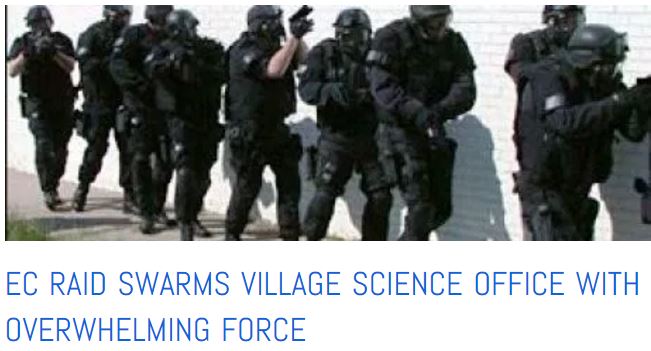
Canada’s environmental reign of terror as directed by Prime Minister Stephen Harper to prevent the First Nations salmon restoration work putting failed federal salmon programs to shame. – click to read more
The department was a frequent target for austerity measures during Stephen Harper’s reign of environmental terror as prime minister. The new Liberal government reinstated a $40-million cut from the DFO’s research and monitoring budget late in 2015.
Since this part of the ‘salmon enhancement program’ was introduced 12 years ago, budget cuts to Fisheries and Oceans Canada and the collapse of ocean salmon pasture primary productivity have left all salmon including the iconic species such as sockeye and chinook in the worst numbers in all of history.
As evidence of the collapse of BC’s salmon recreational and commercial fisheries for Fraser River sockeye were closed entirely this summer, while the Skeena River system has seen closures for chinook, coho, pink and steelhead and season-long closures for sockeye and chum.
Not even one-third of the 4 million sockeye expected to enter the Fraser this summer have returned. A broad range of experts have declared the state of Fraser River chinook as being in a critical state of collapse. The DFO’s Albion test fishery has always produced between nine and 30 chinook a day in the ’80s and ’90s, this July 2017 has seen mostly zero fish and only in a few days as many as two chinook.
“The situation for Fraser River chinook couldn’t be worse,” said the salmon foundation’s western director, Jay Ritchlen. “We’re asking the government to immediately close chinook fisheries to protect these fish and the endangered southern-resident killer whales that depend on them for food.”
Here’s How We Brought Back The Fish Once And How We Will Do It Sustainably For The Rest Of Time
 In 2010 40 million Sockeye salmon, instead of the expected 1 million returned to the Fraser river of the Pacific Northwest when only 1 million were expected. That historic return of salmon happened all because of a chance 2008 summer volcanic eruption that added vital mineral dust to the ocean fish pasture of those salmon in the Gulf of Alaska.
In 2010 40 million Sockeye salmon, instead of the expected 1 million returned to the Fraser river of the Pacific Northwest when only 1 million were expected. That historic return of salmon happened all because of a chance 2008 summer volcanic eruption that added vital mineral dust to the ocean fish pasture of those salmon in the Gulf of Alaska.
My salmon restoration company effort of 2012 not only offered that solution but delivered it in 2012 working with a tiny village of native people who once were known as the People of the Salmon. They could no longer use that name as their salmon were now all but gone. They came and asked me to help and together we became the volcano and delivered a single fishing boat load of vital mineral dust, just as Mother Nature does. We dusted the native peoples ocean fish pasture with our bags of life restoring and sustaining vital mineral dust in the summer of 2012.
IT JUST WORKED!
 Looking astern off the transom of my research ship before we began our dusting to restore the ocean to health the ocean was a blue desert. After dusting the same view revealed a beautiful emerald-green see that had become full of life. |
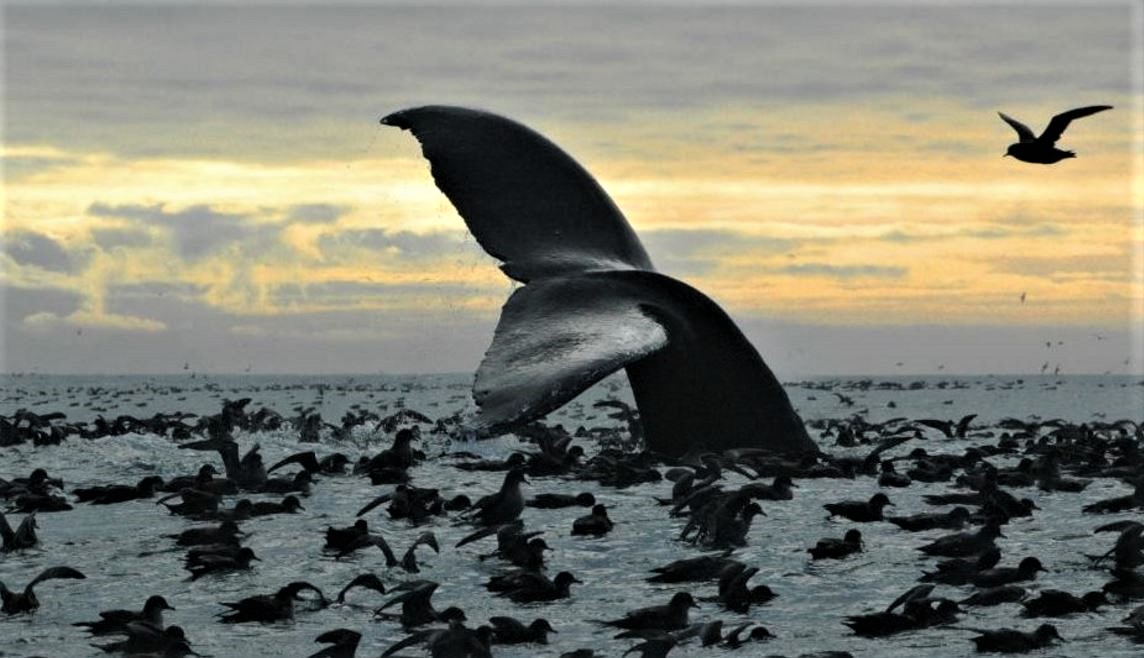 Feeding in a healthy ocean pasture, Once our ocean pasture had returned to health, mere days later, the great gathering of whales arrived to dine. More whales appeared than it was possible to count. The swam as much as a thousand miles to feed in their Garden of Eden. |
We don’t need to wait for the volcanoes.
Indeed we must not wait for the volcanoes as the collapse of ocean pastures around the world has proceeded to a catastrophic state. I have proven we can BE THE VOLCANO and working as Mother Nature has taught us, using her same natural minerals, we can take the dust back to her oceans to restore, replenish, and sustain her ocean pastures. Because we know how to do this in the safe and sustainable manner we now have at hand we simply must. It is our solemn duty as living participants here on Mother Natures blue planet.
My voyages of recovery for the world’s ocean pastures are signing up crew members now, join us!
Want to remain an onery skeptic or defend your turf with ‘not invented here’ nonsense, that’s ok just watch my dust.









